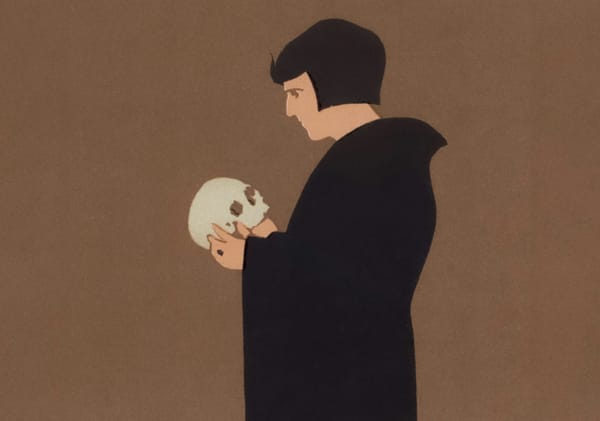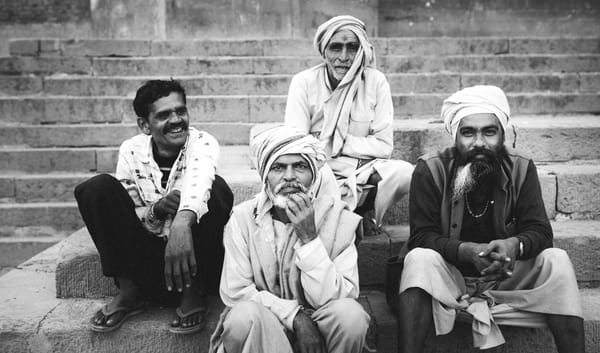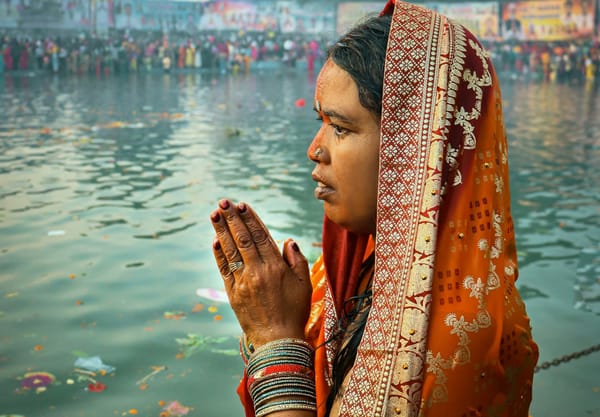What is India's True Identity: Dharmic or Religious?

“India did not have a religious identity before,” says Vidya Balan, during an April 2024 podcast. While this view is also adopted by many eminent scholars, including PM Nehru, who believe that the state must remain separate from religion, we must take a nuanced view of the subject.
In contrast, Annie Besant famously stated, “Make no mistake; without Hinduism, India has no future”. How do we digest these two, seemingly very contradictory views and arrive at a satisfactory conclusion? What are the lines of distinction here? For that, we need to understand the terms “Dharma” and “Religion”.
Dharma and Religion
There is a widely accepted thought that both terms are the same, and a mere translation of one another. This conception is misleading.
“Dharma” is a very wide-ranging term which covers many subjects. Dharma, ethically and morally, means “a set of duties”. It lays a foundational analysis of living a civilized, mannered, and structured life. There are various types of Dharma mentioned in the texts, such as
- SANATAN DHARMA (universally and cosmically applicable principles such as Satya, Ahimsa, etc.)
- SAMANYA DHARMA (refers to duties practiced by all, regardless of any distinction, which are prerequisite for fulfilling a spiritual journey in life)
- RAJADHARMA (refers to duties practiced by the kings or the heads of the state, in order to rule the state effectively)
So as you can see, a person would have to practice many dharmas, depending upon how his life intersects with his social status; thus giving rise to multiple sets of duties, which he must fulfill, in order to live a prosperous life.
On the other hand, religion is a very plastic and restricted term, which binds people to a particular faith, and lays out a structured way of worship, often to a single prophet. It dictates the terms of belief and worship regarding the prophet, which are to be followed by the 'believers'. And obviously, it applies to only one particular faith and not to the universe. It is a point of view of the Abrahamic faiths with a very narrow spiritual understanding, and a very restricted theological approach.
Thus, the identities of Muslims, Christians, and Jews, can be termed as “religious” because they are basically driven by a set of principles, which are not universally applicable. So, there is a very natural tendency of exclusivism when we talk of religions.
Equating Dharma and Religion
It is a widely accepted scholarly view that the colonizers needed to understand the social structure of Indians, in order to effectively legislate and rule the natives. Being from an Abrahamic faith, they could not find a word that could grasp the universal nature and rich theology of the dharma of Indians. So, they tried to fragment the population into various religions, based on traditions and rituals, which eventually led to equating dharma with religion.
Hence, it can be concluded that the thought of dharma being the same as religion is a very oversimplified understanding of the complex situation and a gross error of fitting various groups of people into a single frame.
The idea of dharma being the same as religion gives rise to an erroneous view of the history of India. When you confine the wide range of Dharma to a sole plastic identity, you tend to strip the civilizational foundation of its uniqueness, and thus Abrahamicize its identity as Hindu. The viral phrase “Hinduism being invented in the 20th century” thus refers to the religious framing of a large population, based on customs and traditions.
Let’s say that there are two Hindus. One of them is a head of state, and the other is a priest in a temple. The head would need to follow the Rajadharma, and the latter would need to follow the Brahman Dharma, to achieve success in their respective roles. So you see here that despite belonging to the same religion, they still would need to follow their respective dharma. And when you dangerously equate the dharma and religion, you end up cutting out people following a similar set of duties within a large civilizational framework, thus giving rise to a sense of othering, for the rest of the groups.
Such an oversimplified view was used to split Sanatan Dharma into the Hindu, Sikh, Jain, and Bauddh religions, thus stripping the dharma of its foundational universal nature.
And more importantly, this fragmentation of the oldest civil society into religions was historically unfair. The Sikhs, Jains, Buddhists, and Hindus were largely intertwined and historically bonded communities. This pluralism is the civilizational heritage of a society which follows the dharma, which establishes the cosmic principles and duties.
Conclusion
The idea that India did not have any such identity bound to faith before is baseless and historically inaccurate, whether it be dharmic or religious. The religious identity of India was associated with Hindus, Sikhs, Buddhists, Jains, and even Muslims and Christians, at various points in its history.
However, if we talk of the dharmic identity of India, then it is something which can never be changed, unless you destroy each and every aspect of it, and later replace it with that of the colonizer, as seen in the histories of the Americas and Australia. Therefore, India’s dharmic identity continues to have Sanatani roots.
Also, the idea that “state must be separated from its religion” only holds good when it is confined to the ideas of identity. The idea of secularism governs the religious aspects of a society, and not its dharmic aspects. Hence, Sanatani values and morals shall always prevail in India, coupled with its historic diversity of various religions co-existing peacefully.





